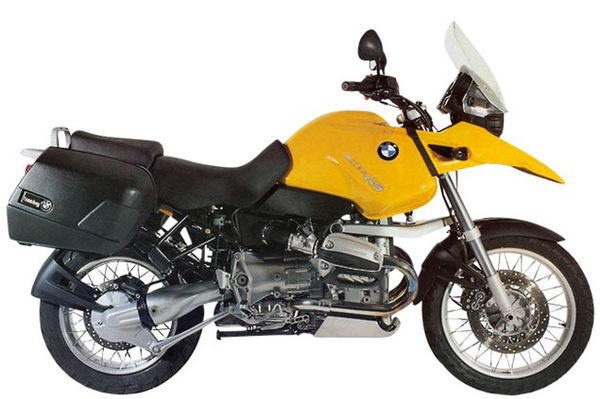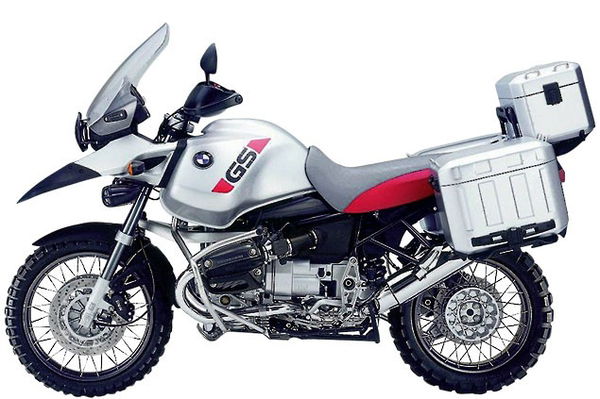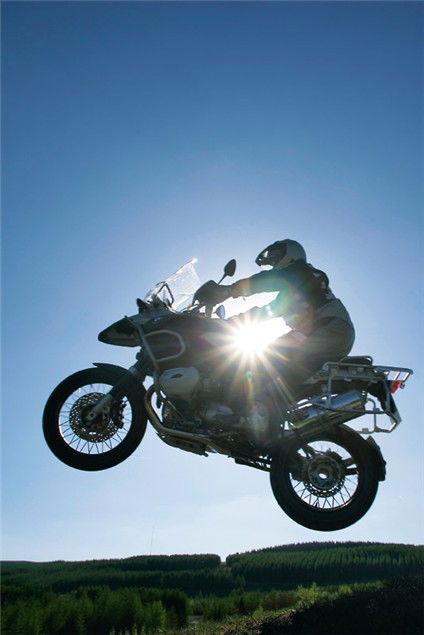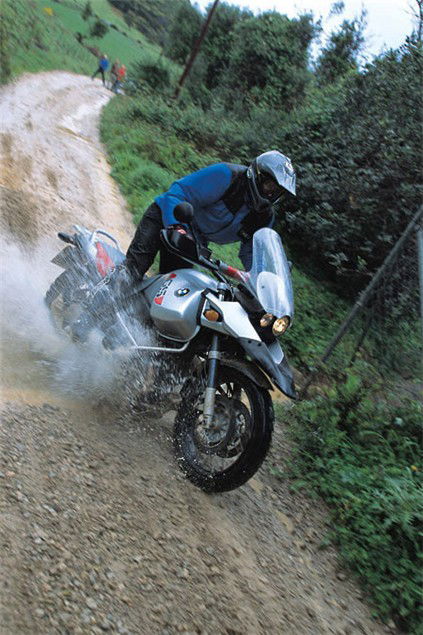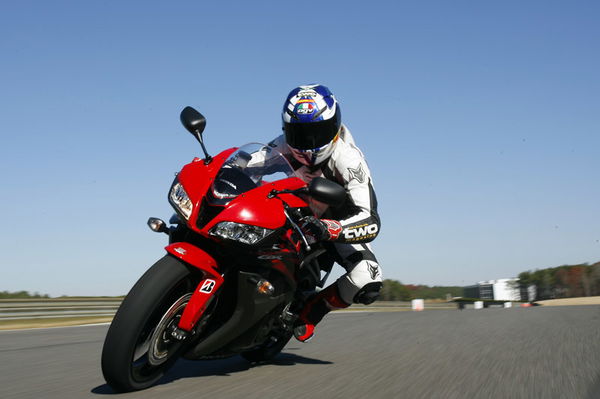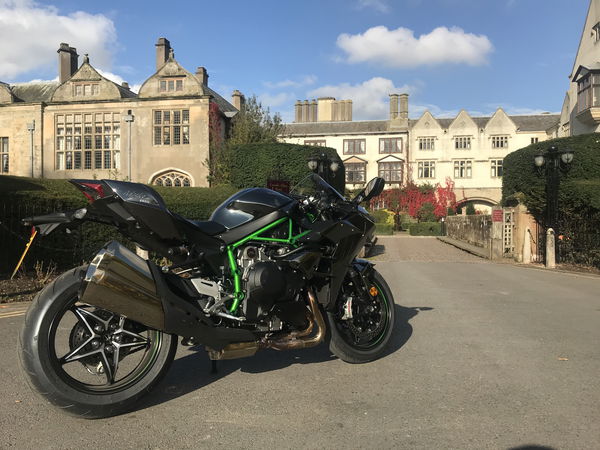Buyer Guide: BMW R1150GS & Adventure
The ultimate buyer’s guide to the R1150GS written by the people who actually own the bike...
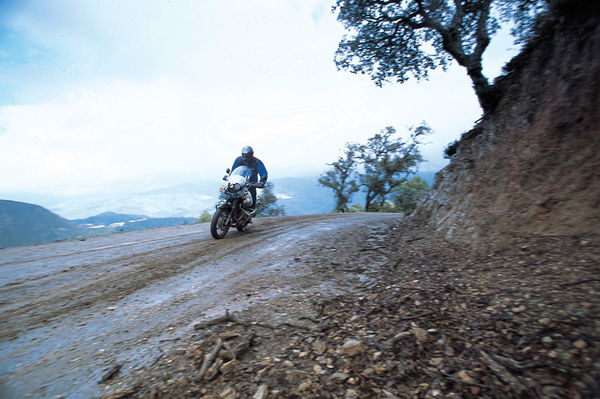

Click to view: BMW R1150GS & Adventure owners reviews, specs and image galleries.
Large capacity adventure bikes have come a huge way in recent years, and none more so than BMW’s seminal GS. Adventure bikes make a mockery of race reps as impractical, uncomfy novelties. Bikes like the R1150GS really do it all – everything from commuting to round the world trips. And they’re relatively fast, handle well and are seriously fun when you know how to ride them properly. Which does take a while.
Some people say they’re 'the two wheeled Range Rover'. We beg to differ. Okay, there’s similarities but unlike their four wheeled counterparts, these bikes often get taken off road and on intercontinental adventures pretty often. And they’re perfect for the job.
The country’s leading independent expert on BMW GSs told Visordown: "If I was going round the world, I’d take the R1150GS over the 1200." While we hear niggles still bother the newer model, the 1150 version is thought to be a more durable machine. Plus it’s lower tech so easier to repair in the field.
It’s a superb every day road bike as well as a pukka overland tool. The GS handles brilliantly, partly due to the innovative Telelever front suspension. Brakes are effective and the engine produces plenty of torque if not a surplus of power. It’s incredibly comfy and practical too and running costs are fairly low. Plus it’s far more durable than most machines both in terms of wear and corrosion. All that together makes the 1150GS an awesome package, and goes a long way to explaining why they hold their value so well in the secondhand market, especially the Adventure, which is very sought after even though the 1200 Adventure superseded it.
Almost a hundred R1150GS and R1150GS Adventure owners filled in our on-line survey about these bikes. They’ve covered over two million miles on these bikes with several clocking up over 100,000 each. When it comes to the hard miles, these owners have put them in.
1999 BMW 1150GS Specifications
1999 BMW 1150GS
Engine a/c, 8v, injected flat twin, 1030cc Power 85bhp @ 7,650rpm Torque 72ftlb @ 5,250rpm
Dry weight 218kg Seat height 840mm Fuel capacity 22 litres Top speed 130mph
1999 BMW 1150GS Adventure
Engine a/c, 8v, injected flat twin, 1030cc Power 85bhp @ 7,650rpm Torque 72ftlb @ 5,250rpm
Dry weight 228kg Seat height 900mm Fuel capacity 20 litres Top speed 130mph
The nuts & bolts
Running costs
Fuel consumption is pretty good for a large bike with the aerodynamics of a grain silo. The overall average is 47.5mpg and plenty of owners aren’t getting less than 50 no matter how they ride. Gordon Clelland gets just 34mpg from his 2002 Adventure but we’re guessing he does lots of town work or rides flat out everywhere with full luggage and pillion. Several riders report an average 55mpg.
Servicing is due every 6,000 miles and alternates minor, major and there’s also a need for an annual check even if the mileage hasn’t been covered as some things like brake fluid replacement are time critical. The annual service can be combined with a minor or major. Average prices in our survey were minor: £157 and major: £344. About 40% of owners do all their own servicing, the same amount do minor jobs only and 20% leave it all to the dealer.
Tyres
Favourite tyres are Metzeler Tourance by a huge margin. They’re a mainly road biased tyre and highly rated for their grip in the wet and dry, longevity and the fact they work ok-ish off road too. Ian Wood prefers the newer Tourance EXP saying they grip better than the original Tourances but he’s a minority.
Michelin Anakees are less popular. Continental TKC80s are a much more off-road orientated choice but they still work well on the tarmac too plus they look great as Howard Gray points out. They don’t last as long as the more road biased tyres though.
Average tyre life is front: 9,971 miles and rear: 7,620. The most enthusiastic can destroy a pair (TKC80s) in about 3,000 miles while the frugal eek 10,000 from a rear and double from a front.
Top five tyres
Metzeler Tourance 59%
Michelin Anakee 8%
Continental TKC80 6%
Continental Trail Attack 4%
= Avon Distanzia 3%
= Continental Road Attack 3%
What goes wrong
Very, very little considering the number of bikes and the colossal miles they’ve covered. But some trends do emerge.
Bearings in the paralever (shaft drive) can fail. A small increase in fuel consumption followed by a grumbling noise are the first signs. Seven owners reported this problem which occurs between 25,000 and 45,000 miles. It should cost no more than £350 to get fixed at a BMW dealer. Five owners had coils break down, causing misfiring.
Two owners reported failures of the brake servo including Steve Bond who was approaching a roundabout at pace at the time. For this reason some people prefer the non servo assisted version of the bike.
Clutches can give grief and a number of reasons are blamed. A leaking slave cylinder is one, wear on the gearbox input shaft is another. It’s something to be wary of as replacing the clutch is an engine out job and all in at a main BMW agent will cost £600+.
Two owners had gearbox problems – this is one to watch out for on the used market as repair / replacement can run into four figures.
A small number of people had problems with the ignition, typically a loose wire. A small number of people managed to warp discs.
That sounds like a lot of problems but we’re talking over two million miles on 92 bikes!
Owner Case Study: "I’ve done 145,000 miles"
David Vaughan-Birch’s 1999 1150GS has covered about 150,000 miles ...and he’s done over 140,000 of them. He uses the bike for a 100 mile commute each day but has also ridden it to Spain and back as well as doing the odd track day.
"Very little's gone wrong. It’s more things wearing out due to the mileage than things going wrong. I had a gearbox spline go at about 45,000 miles which cost £600 to fix. The alternator exploded at 120,000 miles. I’ve had to replace the front wheel too as the mountings for the front brake had worn. I’ve just replaced the tank as water gets in through the filler and rots it from the bottom. I found an Adventure tank for £300 and fitted it myself. I replaced the rear shock at 140,000 miles – I just bought a genuine BMW one as the original one was fine. It was about £300 plus fitting although I’d fit it myself if I was doing it again. The wiring loom can go brittle and the insulation crack, but you can fix it with unifying electrical tape. Mine’s still on the original clutch.?“It’s an easy bike to work on. It’s very well designed but the manufacturing’s not so good and can rust.
"If I was buying another I’d check the rear subframe under the seat as winter salt kills them. Hammerite is the high mile GS owner’s friend. The wheels are a sod to clean.?“If I did get another bike it’d be a newer 1150 Adventure. It’s a brilliant machine, better than the 1200 and more reliable.”
Finish
Generally very robust but still some areas stand out as regular trouble spots. The front fork brace is the main one. The fork leg lowers and engine (particularly the front casing) also get criticism from a lot of owners. Quite a few owners got parts replaced under the factory warranty and some replacements seem fine while others corroded just as badly.
Spokes, front wishbone, gearbox casing, mirror stems, bolt heads, the main frame and the bottom hose union of the clutch slave cylinder all get the odd mention but aren’t that bad.
Modification
This is a bike owners spend a lot of time and money changing. Screen and headlight mods are common as the standard items are not well liked. HID conversions and spotlights are widely fitted as are other screens especially the MRA Vario or ‘Tobinators’.
GPSs are also popular. Ditto Ohlins. Also Maxton. After market seats are quite widespread (Sergant’s the most popular) although the original perch is better than most, some owners are racking up galactic miles.
Various crash protectors are common including some Touratech accessories which protect the lock stops. Some owners think the BMW crash bars can make the bike dig in and flip over in a spill.
Rear huggers are useful to stop muck covering the rear of the bike and pillion.
Exhausts are less popular than on race reps. Most just go for an end can or Y-piece which replaces the cat. The most common set up is a Remus can and Y-piece. As well as making the bike louder owners say it boosts the midrange and some reckon it improves the fuel consumption too. The Remus kit is generally well thought of (it’s good quality Austrian made).
Some people just fit for a stubby can (made up by ‘Bryn’ on the superb www.ukgser.com forum) which gives a good weight saving (about 15lbs) with little increase in noise. Others say a Remus can with the original cat in place gives the best increase in bottom end. It’s worth getting your bike dyno’d if you are making any exhaust mods as machines vary and what works well for one might not be so effective on another.
There are plenty of companies selling a huge range of parts designed for this model. Check out Touratech, Wunderlich as well as Motorworks and Motobins for used bits.
Luggage
Not surprisingly very popular. By far the most popular are BMW System panniers (the black plastic ones). They’re generally well regarded although the left one’s small due to the exhaust cut out. The red locking tab can break but spare parts are available. Next most popular are the BMW aluminium Adventure boxes. Some owners love them, others think they’re expensive and the hinges too fragile. Then there’s loads of other brands. Touratech is the most common and well rated by those who have them. Hard luggage boosts the value of a used bike.
Owner Case Study: "I rode Alaska to Argentina on mine."
Dave Streeter’s covered about 80,000 miles on his 2001 R1150GS and some of that was on a trip right down through the Americas.
“The trip was organised by Globe Busters. It was amazing. I haven’t had a single problem with the bike in the whole time I’ve had it but I did when I fell off it twice on the trip. The first time I ran into a truck in Mexico. I got up afterwards and I could see my bike in two pieces. The forks had been ripped right off. I’d pulled a muscle in my shoulder. I though the bike would be a write off but we vanned it to a BMW dealer in Panama who put it back together. It needed £2,000 worth of bits but I think we got a good deal.
“I hit a dog in Peru at about 80mph. My bike had the BMW crash bars fitted and they dug in and made it flip over, breaking the screen and lights but we gaffa taped it together.
“One good modification I made was fitting the rear bevel box of an 1100GS. It lowers the gearing slightly which makes dirt roads and riding through traffic much easier and kinder to the gearbox. The Adventure came with an optional low first gear but this was a much cheaper way to get the same result. I swopped it over myself and it’s pretty easy.
“I’m not selling it. We had several 1200GSs on the trip and they had lots of problems. A mate bought one and the key chip antenna failed in Ireland and he was stuck for nine days while they got the part. The 1150’s much more reliable.”
